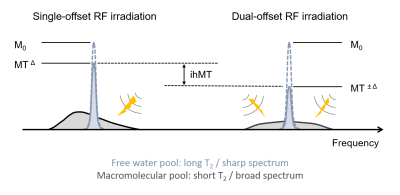Weekend Educational Session
Signal Enhancement: The Power & the Glory
Session Topic: Signal Enhancement: The Power & the Glory
Session Sub-Topic: Signal Enhancement: The Power & the Glory
Weekend Course
ORGANIZERS: Elena Vinogradov, Lucio Frydman
| Sunday Parallel 3 Live Q&A | Sunday, 9 August 2020, 14:00 - 14:30 UTC | Moderators: Daniel Gochberg |
Skill Level: Basic to Intermediate
Session Number: WE-18
Overview
The course will focus on the basic principles and on in vivo applications of signal-enhancing techniques in molecular imaging, with emphasis on two complementary approaches. One of them relies on achieving nuclear hyperpolarization, a metastable state requiring customized hardware and targeting exogenously injected molecules. The other involves magnetization transfer, a method employing RF and internal interactions to magnify endogenous or exogenous agents. Both approaches open complementary windows into physiological and metabolic events, with molecular-level perspectives. The lectures will describe the physics underlying the different approaches, and will provide examples of the applications.
Target Audience
Students and researchers interested to learn about the physics behind hyperpolarization and CEST/MT experiments and about their contemporary perspectives.
Educational Objectives
As a result of attending this course, participants should be able to:
- Recognize underlying principles of hyperpolarization;
- Describe different hyperpolarization methods;
- Describe principles and routes of magnetization transfer; and
- Recognize applications of CEST and MT.
| Basics of CEST and Spin Lock
Moritz Zaiss
|
||
| Basics of MT
Michael McMahon
|
||
| CEST Applications
Kannie WY Chan
Chemical exchange saturation transfer (CEST) MRI is a robust molecular imaging approach, which has shown many promising clinical applications. For example, to identify radiation necrosis and tumor recurrence. CEST enhances the detectability of many endogenous and exogenous molecules presence at low concentrations in vivo. This course will cover the principles of CEST and its applications mainly in the brain. This is to showcase CEST can detect specific endogenous or exogenous molecules in vivo to facilitate diagnosis and therapy, including brain tumor, cancer treatment and dementia.
|
||
 |
ihMT Principles & Applications
Olivier Girard
This lecture will cover the basic principles and applications of the recently developed inhomogeneous Magnetization Transfer (ihMT) MRI technique. IhMT is a promising myelin imaging technique and it offers an exciting opportunity to exploit a new endogenous contrast mechanism in vivo using MRI, by discriminating biological tissues based on their dipolar relaxation time (T1D). This presentation will review the basics of the dipolar order concept and associated thermodynamic models. The lecture will also cover typical ihMT experiments and describe up to date MRI sequence optimization. Promising MRI applications will be presented, as well as future research directions.
|
|
| Basics of Optically Pumped MR
Rosa Tamara Branca
Spin-exchange optical pumping (SEOP) of mixtures of alkali-metal vapors and noble gases can be used to efficiently polarize the nuclei of noble-gas atoms. Liters of noble gases at standard temperature and pressure can now be produced with nuclear spin polarization levels of several tens of percents. In this talk we will review the physics of the SEOP process, and then discuss our understanding on how experimental conditions affect final polarization levels.
|
||
| Basics of para-H2 Enhanced MR
Warren Warren
|
||
| Hyperpolarization via Dynamic Nuclear Polarization
Arnaud Comment
In this educational course, basic concepts of dynamic nuclear polarization (DNP) will be outlined. The hyperpolarization methods based on DNP and used for 13C MRI and MRS applications will be introduced.
|

 Back to Program-at-a-Glance
Back to Program-at-a-Glance Watch the Video
Watch the Video Back to Top
Back to Top